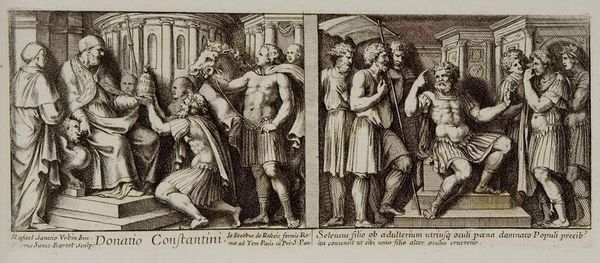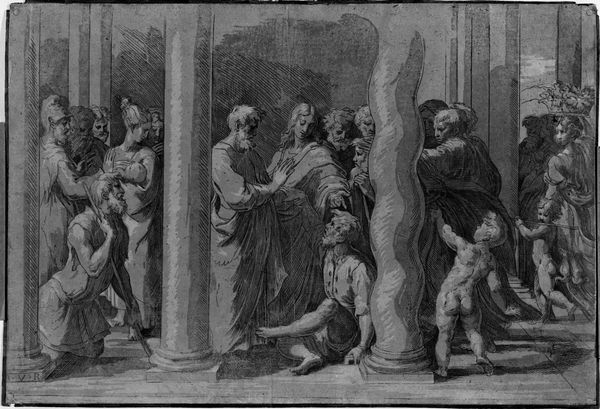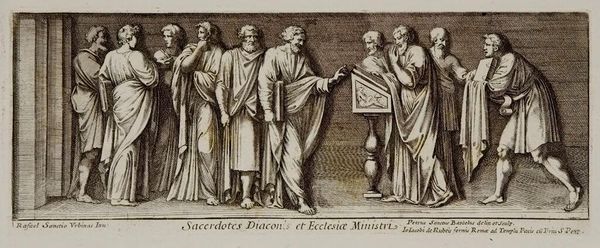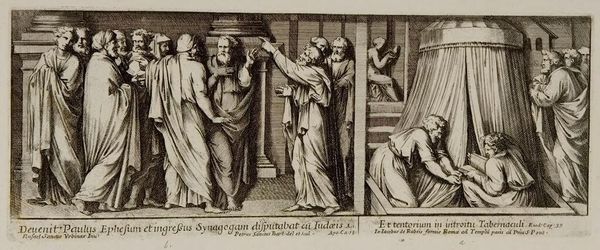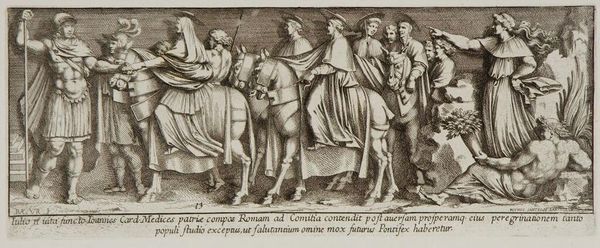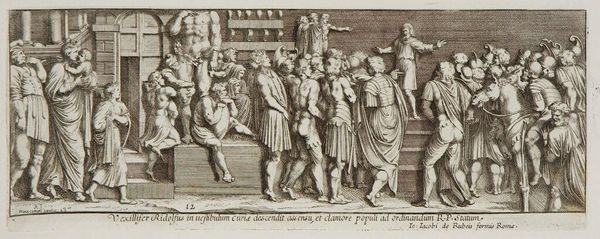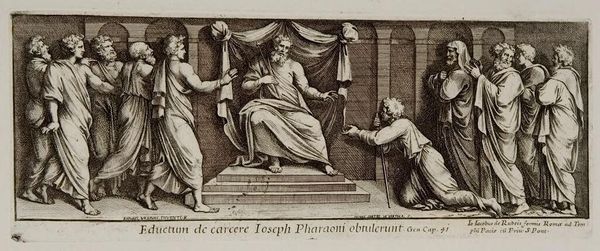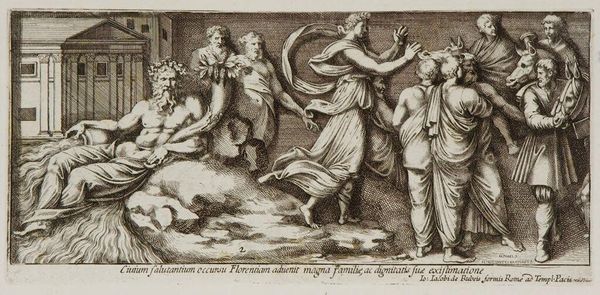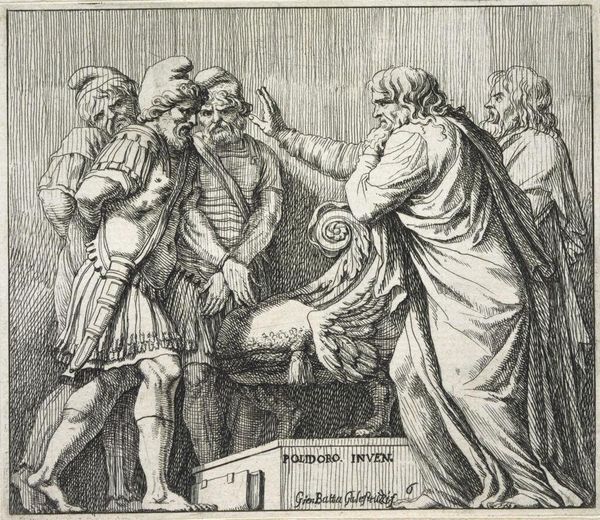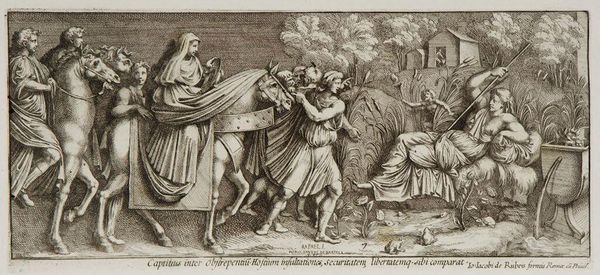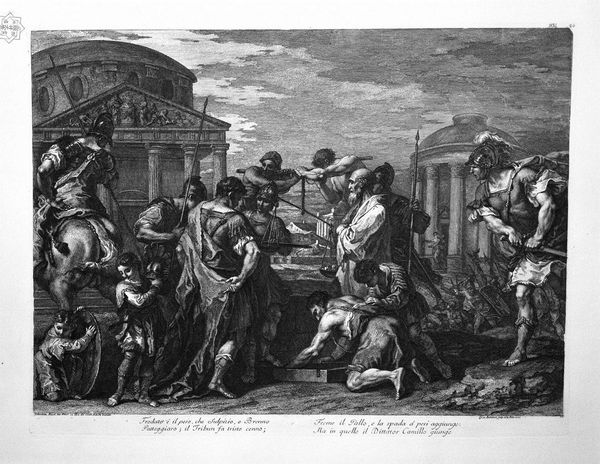
Copyright: CC0 1.0
Curator: This is Cornelis Cort’s “Roman Sacrificial Procession,” currently housed at the Harvard Art Museums. It depicts a classical scene of offering. The details, despite the limitations of the print medium, are quite striking. Editor: The eye is immediately drawn to the two bulls being led, a visual emphasis on the labor involved in this social ritual, hinting at the community's material investment. Curator: Exactly. Sacrifices like these weren’t just about religious piety. They were deeply intertwined with social power, class structures, and the reinforcement of Roman ideals. Editor: Right, the choice of materials for the ritual – the animals, the vessels they carry – all represent resources controlled and offered, a display of societal wealth. Curator: And it’s essential to remember the implications of ritual practices for those marginalized within Roman society, women or enslaved people for example. Who benefited, and who was excluded from this symbolic performance? Editor: It makes you think about the labor involved in making the print itself—the engraver, the paper. All tangible things that connect the image to its own production and circulation. Curator: Precisely. Looking closely, this print reveals that these seemingly ancient scenes reflect much about the time they were created. Editor: Definitely. It prompts us to consider the tangible conditions that gave rise to both the scene depicted and the artwork itself.
Comments
No comments
Be the first to comment and join the conversation on the ultimate creative platform.
